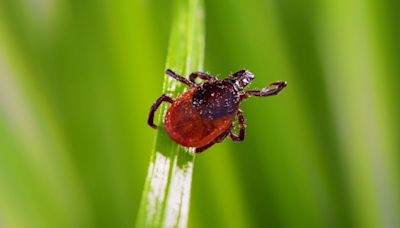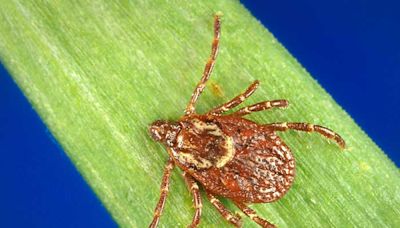Search results
May 23, 2020 · 1. Alpha-gal syndrome. While this isn’t technically a disease, the lone star tick is most famous for its ability to spur a red meat allergy. Alpha-gal is a form of sugar found in red meat,...
Nov 14, 2023 · The Lone Star tick is mainly found in the Southern and Eastern U.S. Its scientific name is Amblyomma americanum. The Lone Star tick can spread: Ehrlichiosis due to Ehrlichiosis chaffeensis and Ehrlichiosis ewingii. Heartland virus disease. Southern tick-associated rash illness (STARI). Bourbon virus disease. Tularemia.
- www.mayoclinic.org
- › …
- › Diseases & Conditions
Oct 5, 2022 · Ehrlichiosis is caused by different species of ehrlichia bacteria. The Lone Star tick — found in south-central, southeastern and eastern coastal states — is the primary carrier of bacteria causing ehrlichiosis. Black-legged ticks, commonly called deer ticks, in the Upper Midwest are less common carriers.
May 15, 2024 · Key points. STARI is characterized by a red, expanding lesion that develops around the site of a lone star tick bite. The STARI rash is very similar to the Lyme disease rash. Though, it occurs most often in the Southern U.S., where Lyme disease is rare. The cause of STARI is unknown. Overview.
- www.ncbi.nlm.nih.gov
- › …
- › Dela J Public Health
- › v.7(1); 2021 Jan
Jan 21, 2021 · These pathogens include several distinct bacterial agents that cause ehrlichiosis and tularensis in humans and dogs, a protozoal agent that causes cytauxzoonosis in cats, and emerging viruses such as Heartland, Bourbon, and Tacaribe.
- www.ncbi.nlm.nih.gov
- › Journal List
- › Infez Med
- › v.29(3); 2021
Sep 10, 2021 · The recently described Bourbon and Heartland viruses are likely transmitted by the Lone Star tick and are just two of the several novel tick-borne pathogens discovered in recent decades. The review will focus on these two viruses that can cause illness with similar characteristics to other diseases transmitted by the Lone Star tick.
The tick was first considered a nuisance as it does not transmit the etiological agent of Lyme disease, but more recent studies have shown that this species can transmit various other pathogens to humans and other animals, such as those that cause ehrlichiosis, rickettsiosis, tularemia, and theileriosis. Figure 1.



